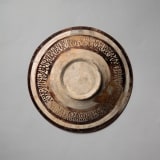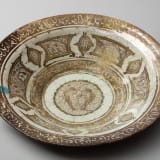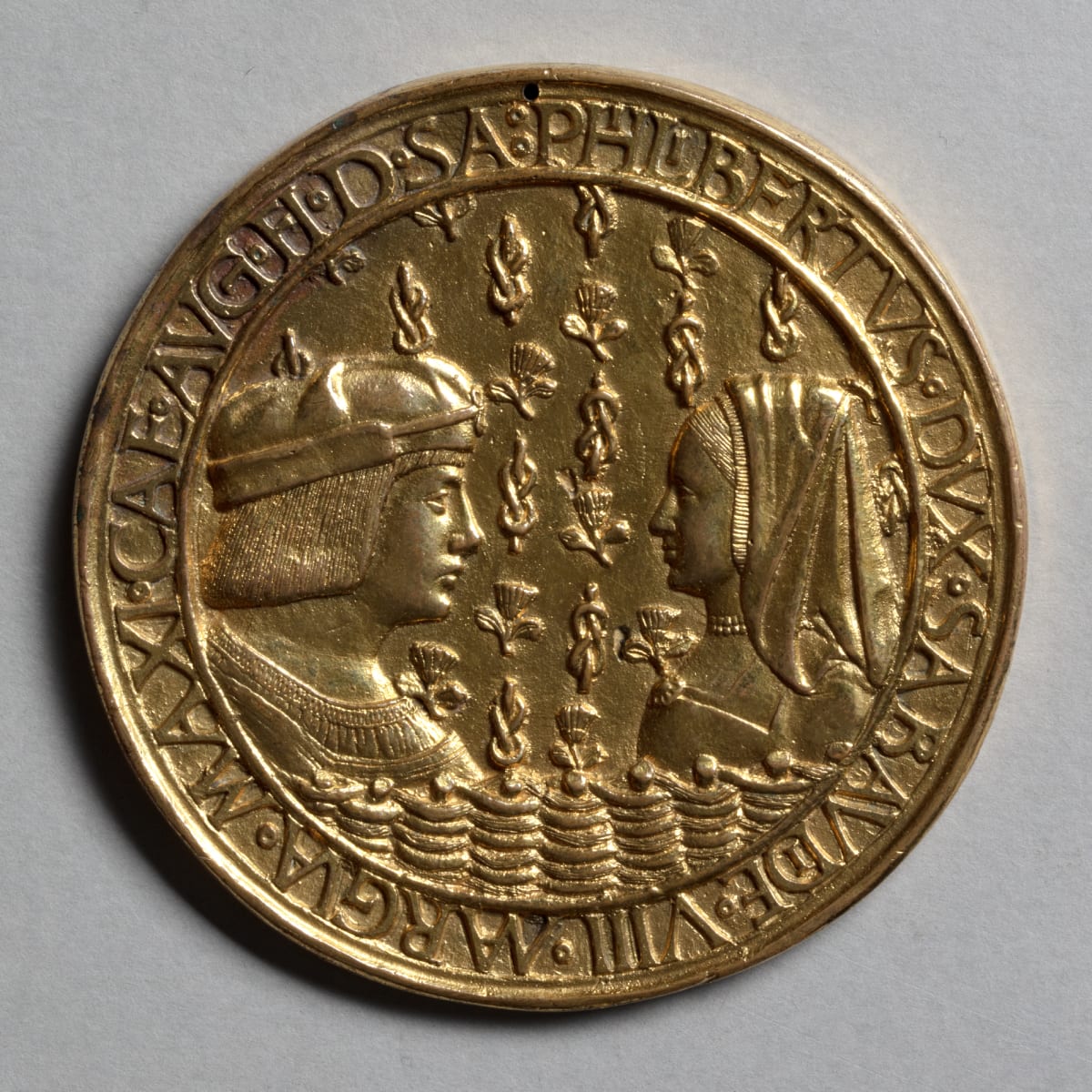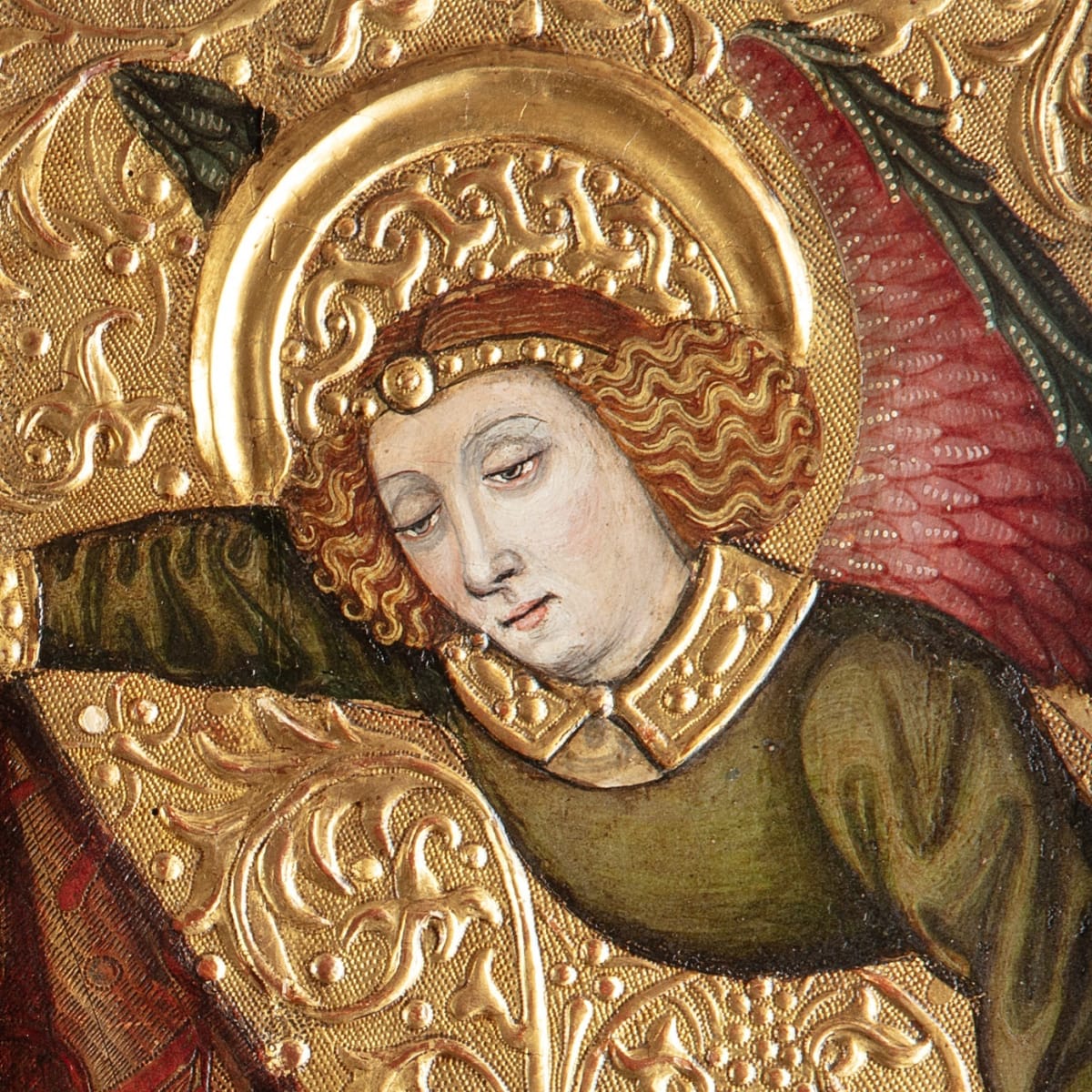



A lustre-painted dish with addorsed birds
This idiosyncratic lustre-painted vessel has a number of distinctive features that suggest it was made during a transitional period in the development of Kashan styles, dating it to c. 1150-1200. The broad, shallow form of the bowl with slightly flattened rim, raised on a short foot, is related to the earliest groups of Kashan lustre-painted wares that relied on Egyptian lustre prototypes (see Mason, fig.5.5, ASH.48, 49). Despite the early form of this shallow, 'Egyptianizing' bowl, it is decorated on the exterior not with a characteristic ‘script-back’ but with a ‘bracket-line’ motif rendered in thick, confident strokes of glossy brown lustre. This is unusual, as the ‘bracket-line’ motif emerges with the stylistic elements typically associated with the early years of the thirteenth century. Further stylistic elements point to the transitional nature of the bowl.









